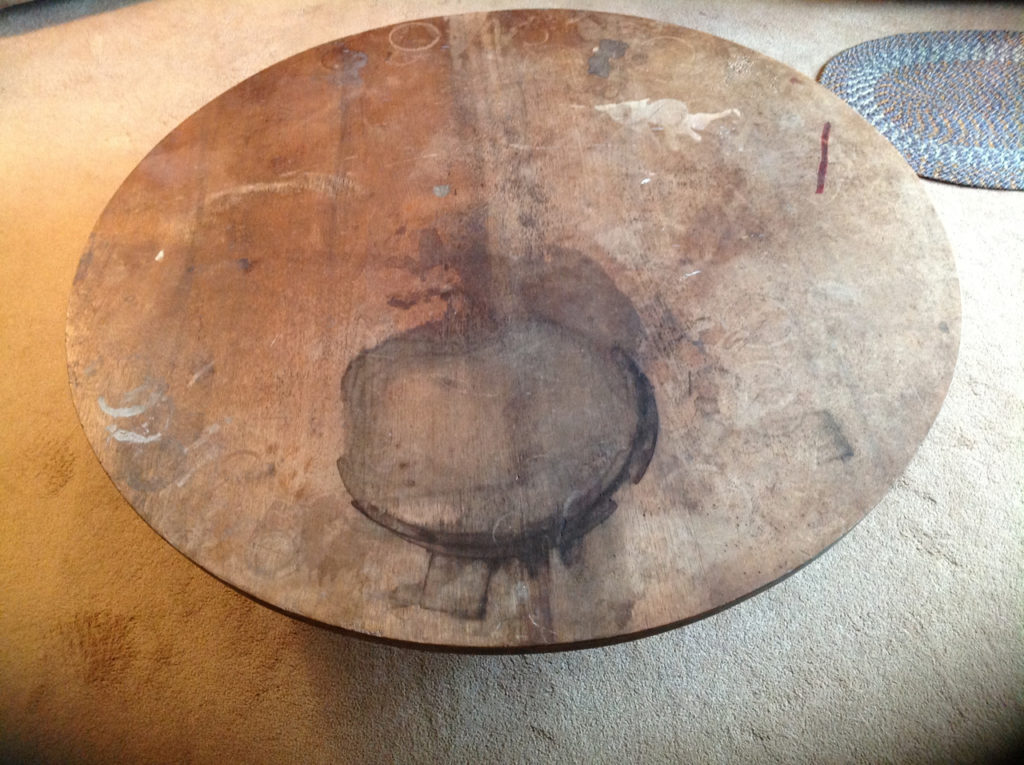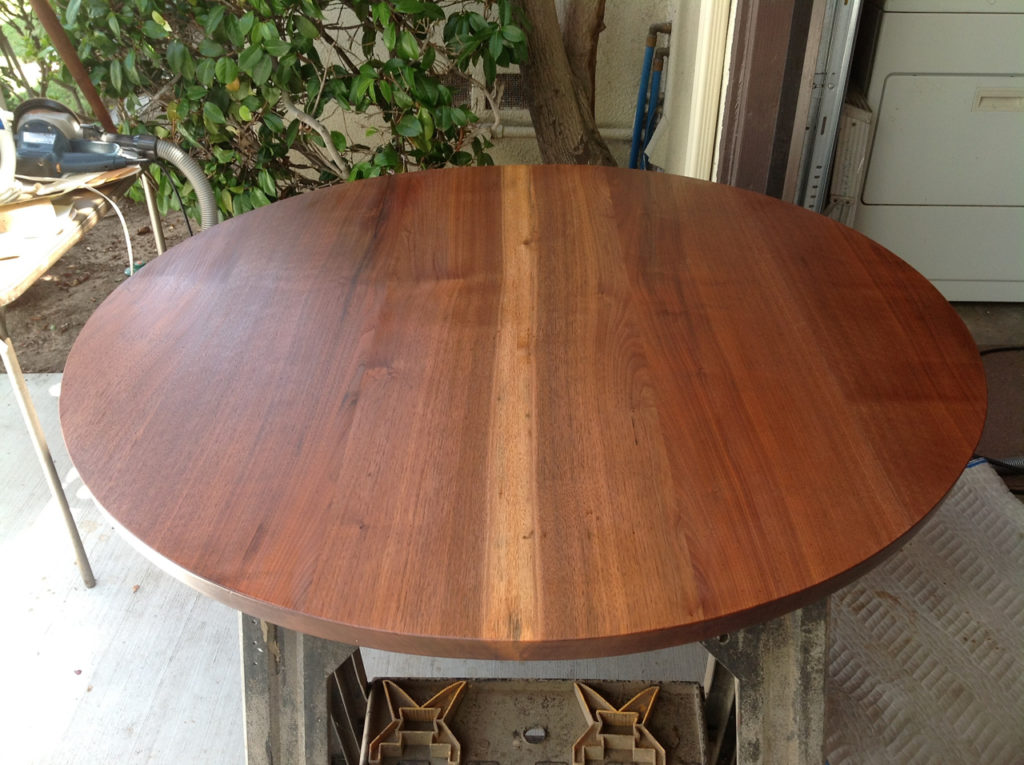We may receive a commission when you use our affiliate links. However, this does not impact our recommendations.
In the October, 2017 issue of Popular Woodworking, page 10, I answered a question from a reader concerning how to handle paint on an exterior door that was beginning to lift at the cross-grain joints where water was able to get in and work its way underneath. This inspired another reader to ask how to remove black stains on his clear-finished exterior door (at least one coat of polyurethane) and prevent them from recurring. Here’s what I responded.

Here’s a picture of the exterior door with the black stains the reader wants to remove.
To get rid of the black stains you’ll need to strip or sand off the finish. Stripping is usually easier, but the polyurethane may be deteriorated enough so that sanding is easier. Most strippers should work OK but they may be slow. The fastest acting will include methylene chloride listed on the can. Slower acting will include n-methyl pyrrolidone (NMP) and be packaged in a plastic container. Everything I’m suggesting here will be easier if you can take the door off its hinges and lay it horizontal on saw horses or something similar.
When you have removed the finish, you need to bleach out the black stains. A deck brightener might work, but I always use oxalic acid crystals, which I dissolve in hot water, the hotter the better. I keep adding crystals until no more dissolve – that is, the crystals sink to the bottom. Oxalic acid can be difficult to find anymore, but you can get it from Amazon. The brand I use is Savogran. I’m not familiar with the other brands, but they may work just fine.

This is a pretty bad case of black water stains.

After treatment with oxalic acid the black stains are completely gone. To be effective, the finish must first be removed so the solution can get into the wood.
So with the finish removed, brush on the dissolved oxalic acid. Brush it on very hot for the greatest effectiveness. Let the liquid dry on the wood so that the crystals reappear. Then hose or wash them off. Don’t brush them off because they will choke you up if you breathe any.
You can apply the solution again once the wood has dried if all the stains aren’t removed. There is sometimes a little brown stain remaining but it is superficial and easy to sand off.
Choosing the best finish to apply is important. If the door gets direct sunlight, you should use a marine varnish from a marina, not from a home center. There are lots of marinas near the coast. Otherwise, you can mail order from a company such as Jamestown Distributors or from Amazon. Typical brands are Pettit, Z-Spar, Interlux and Epifanes. They contain UV inhibitors that block the UV light. Common brands from home centers are worthless for blocking UV.
If the door isn’t exposed to sunlight, you can use any finish. But the idea is to block the water penetration that has caused the black stains. So whichever finish you use, you should apply at least three coats.
– Bob Flexner
Here are some supplies and tools we find essential in our everyday work around the shop. We may receive a commission from sales referred by our links; however, we have carefully selected these products for their usefulness and quality.






![How to Build a Modern Kitchen Island [Video]](https://dev.popularwoodworking.com/wp-content/uploads/bfi_thumb/dummy-transparent-olcy6s63it1p9yp7uhusjas7c8kahafrhg9su7q9i0.png)


I’m refinishing some badly abused wooden lockers made of Douglas fir. The doors are the worst with the carcase being in better shape. Can you offer your opinion – if I need to bleach out stains on the doors… might it be best to bleach all show surfaces to maintain even coloring of the base wood?
I intend to finish with light shellac. I’ll fill defects (hardware holes, scratches, pencil depressions, BB gun hits and likely knife throwing practice) with epoxy colored with sawdust.